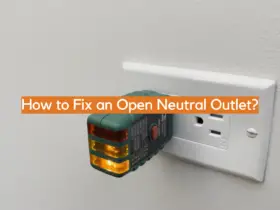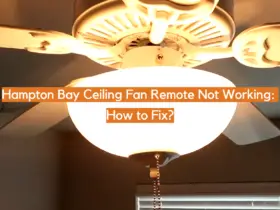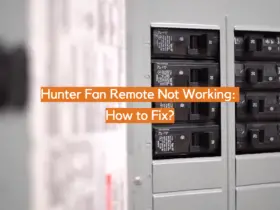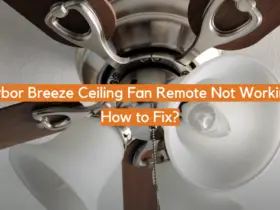If you’ve recently experienced electrical outlet sparks when plugging in, then you’re likely wondering what could be causing the issue and how to fix it. Fortunately, this is a common problem that can generally be handled with ease. In this article, we’ll discuss some of the most common causes of electrical outlet sparks and provide helpful tips on how to fix them.
Causes of Sparking Outlets
There are a few different reasons why electrical outlets may spark when plugging in. The most common cause is an overloaded circuit, which happens when too many devices are plugged into the same outlet or circuit. Another possible cause is worn or damaged wiring, which can lead to improper electrical currents and sparking. Finally, if there is corrosion in the outlet itself, this can also lead to sparking when plugging in. [2]

When Is a Sparking Outlet Dangerous?
Large and/or long sparks
Large and/or long sparks indicate a significant amount of energy surging through the outlet.
Yellow or white sparks
Small sparks that are yellow or white in color may not indicate a serious problem, but they could be the sign of an overloaded circuit. If you frequently see these sparks when plugging appliances into the outlet, it is advisable to have an electrician inspect the wiring and circuits. [4]
Burning smell
A burning smell from an electrical outlet is a sign of serious danger. You should unplug any devices in the area, turn off electricity to the room and call in an electrician as soon as possible before attempting any repairs yourself. [4]
Frequent sparks
If you are noticing sparks frequently when plugging in, this is most likely due to a loose connection and can be relatively easy to fix. The outlet should be opened up and all the connections checked. If any of the wires are loose, they will need to be tightened or reattached securely. [4]

Normal Outlet Sparks vs. Bad Outlet Sparks
When your electrical outlet starts sparking, it can be a sign of trouble. To determine what’s causing the problem and how to fix it, you first need to decide if it’s normal or bad sparks.
Normal sparks occur when an appliance is plugged into an outlet that hasn’t been used in awhile or when something draws a sudden surge of current. These sparks are usually short and harmless.
Bad outlet sparks, on the other hand, happen when there’s a malfunction in the outlet itself or with the electrical wiring. These sparks can be more powerful and persistent than normal sparks, and it’s important to shut off power to your home immediately if you notice these bad sparks. [2]
Reasons for Dangerous Sparks
Overloading
Sparks that result from overloading an outlet can be incredibly dangerous and should be resolved immediately. An overloaded outlet occurs when too many appliances are plugged in to the same outlet, causing it to exceed its rated current capacity of 15 or 20 amps. This is especially common with heavy-duty appliances like space heaters, window air conditioners, refrigerators, and microwaves. If the outlet is not an AFCI outlet (Arc-Fault circuit interrupter), sparks may occur. [1]
Short-Circuiting
Another common cause of sparks is short-circuiting. Short-circuiting can occur when two wires touch and create an electrical arc. This causes a high current to flow through the outlet, resulting in sparks. To avoid this, make sure your outlets are always dry and free from debris or other objects that could cause the wires to come into contact with one another. [1]
Moisture
Moisture and condensation can also cause sparks when plugging in. If the outlet gets wet or damp, it can short-circuit and cause sparks to occur. To avoid this, make sure your outlets are always dry and free from moisture or other objects that could contain moisture. [1]
Loose Connections
A loose connection between the outlet and the wire can also cause sparks. This is because when electricity is flowing through a loose connection, it causes an arc that produces sparks. To avoid this, make sure your outlets are always tight and free from any damage or other objects that could loosen the connection. [1]
Ordinary Sparks
Sometimes, sparks can occur when plugging in an appliance even if the outlet is not overloaded or short-circuited. This is due to a phenomenon known as arcing and it usually happens when you first plug something in. The reason for this is that the contact between the male prong of your appliance and the female receptacle of the outlet causes tiny electrical arcs to form, which result in sparks. [1]
Water Exposure or Age
If your electrical outlet is sparking, the problem could be something as simple as water exposure or age. If an outlet has been exposed to water, it can cause corrosion on the wires and their connections. This reduces the effectiveness of the connection and results in sparks. Similarly, if an old outlet hasn’t been replaced in a long time, the wiring could be worn down and corroded, resulting in sparks. [1]
Negligent Repairs
Sparks can also occur if someone has made a negligent repair to an outlet. If the repair is done incorrectly, it can create a loose connection between the wires and the outlet, which results in sparks. To avoid this, make sure that any repairs or installations are done by a qualified electrician. [1]
Old Outlets
Lastly, old outlets can cause sparks when plugging in. This is because over time, the contacts on the outlet can wear down and become loose. When this happens, electricity can jump across the gap between them and cause an arc, resulting in sparks. [1]

Improper Installation or Repair
Improper installation or repair of an outlet can also cause sparks when plugging in. If the wiring is not done properly, it can create a loose connection between the wires and the outlet, resulting in sparks. To avoid this, make sure any installations or repairs are done by a qualified electrician. [1]
Steps to Fix a Warm or Sparking Outlet
- Start by unplugging all devices from the outlet and turning off the power to that circuit at the breaker box.
- Check to see if any of your outlets are warm to the touch—if so, replace them as soon as possible. Also, be sure to check all other nearby outlets for signs of sparking or warmth before continuing with the repair.
- With the power still off, unscrew and remove the outlet’s faceplate and inspect the wiring inside. Be sure to look for any evidence of damage or loose connections.
- If you find damaged wiring or a loose connection, turn off the electricity at the breaker box before attempting to make repairs. For safety purposes, it’s best to consult a professional electrician for assistance if you’re not comfortable working with live wires.
- If the wiring seems to be in order, make sure everything is securely connected and replace the outlet faceplate.
- Once everything is back in place, turn on the power at the breaker box and test your newly-repaired outlet. If all is well, you should now have a functioning and safe electrical outlet! [2]
Use a Receptacle Tester to Troubleshoot Common Problems
One of the simplest ways to troubleshoot common problems with electrical outlets is to use a receptacle tester. This tool, which plugs directly into an outlet, can tell you whether it’s properly wired and grounded or if there’s something wrong. A faulty wiring connection in the outlet could be causing sparks when plugging in devices. Using a receptacle tester helps you quickly determine the cause of the problem and take action to fix it. [2]

Preventing Outlet Trouble
Use Power Strips Only When Necessary
One way to reduce the risk of sparking electrical outlets is to use power strips only when absolutely necessary. Power strips allow you to plug in multiple appliances at once, but they can overload an outlet if they have too many cords plugged into them. It’s best to plug each appliance directly into its own outlet if possible. [3]
Get Rid of Damaged Wires/Cords
If the wires or cords of appliances are frayed, damaged, or exposed they should be replaced right away. Exposed wires can cause sparks when plugged in and can also lead to an electrical fire. It’s always best to use new wiring that is up to code and has been approved by a certified electrician. [3]
Install GFCIs
GFCIs, or ground-fault circuit interrupters, are designed to protect people from electric shocks. They work by monitoring the amount of electricity flowing through the outlet and shutting the power off if an imbalance is detected. GFCIs should be installed in any areas with water (like a kitchen or bathroom) to ensure safety. [3]
Get Your Wiring Checked
If you’re still having issues, it may be time to call in a professional. A certified electrician can inspect your wiring and outlets to make sure everything is up to code. This is an important step for preventing sparking outlets and ensuring the safety of your home. [3]

FAQ
Why does my outlet spark when I put a plug in?
Why does electric spark occur?
Electric spark occurs when an electric current is passed through a space where the air contains particles such as dust or other debris. The particles break down into ions which then create a spark of electricity when they collide with each other at high speeds. This type of spark can occur in electrical outlets if there’s damage to the wiring, creating a loose connection and allowing for the spark to occur.
Can an outlet spark with nothing plugged in?
Yes, an outlet can spark even when nothing is plugged in. This usually indicates a loose wire or poor connection inside the outlet itself. In this case, it’s important to have an electrician inspect and repair the outlet as soon as possible to avoid any potential fire hazards.
Can a bad outlet start a fire?
Yes, a bad outlet can start a fire if it has faulty wiring or a loose connection. When an electrical current is forced through the outlet, it can cause arcing and sparks which can ignite nearby combustible materials such as wood, paper, fabrics, etc. To avoid this risk, always have any sparking outlets inspected and repaired by an electrician.
Can a faulty outlet start a fire?
Yes, a faulty outlet can start a fire if there is enough current running through it and the wiring is damaged or loose. Faulty outlets can create arcing between the metal prongs of your plug and the contact points inside the outlet which results in sparks that can ignite nearby combustible materials. Be sure to have any sparking outlets inspected and repaired by an electrician as soon as possible.
Can a bad outlet cause a fire if nothing is plugged in?
Yes, a bad outlet can cause a fire even if nothing is plugged in. This usually indicates a loose wire or poor connection inside the outlet itself which can cause arcing and sparks when an electrical current is passed through it. It’s important to have any sparking outlets inspected and repaired by an electrician as soon as possible to avoid any potential fire hazards.
How do I know if my outlet is damaged?
An easy way to tell if your outlet is damaged is to plug something in and see if it sparks or not. If it does spark, then you know the outlet needs to be inspected and repaired as soon as possible. Additionally, other signs of a damaged outlet include discoloration around the outlet, a burning smell near the outlet, or physical damage such as cracks.
Can an outlet cause a house fire?
Yes, an outlet can cause a house fire if the wiring is damaged or loose. Faulty outlets can create arcing between the metal prongs of your plug and the contact points inside the outlet which results in sparks that can ignite nearby combustible materials. To avoid this risk, always have any sparking outlets inspected and repaired by an electrician as soon as possible.
Useful Video: How to Replace an Electrical Outlet – Replace Burnt Out Electrical Outlet and Old Damaged Socket
Conclusion
At the end of the day, electrical outlets that spark when plugging in can be a cause for concern. But with a bit of knowledge and basic troubleshooting, you can often fix the issue quickly and easily. Always check your home’s wiring before calling in an electrician to ensure your safety. If you’re still experiencing issues after trying some of our tips, it’s always best to contact a professional electrician for help. They can assess the situation and recommend the best course of action. In any case, safety comes first, so be sure to take all necessary precautions when dealing with electricity.
We hope this article has been useful and provided you with helpful tips on how to fix electrical outlet sparks when plugging in. If you have any further questions or comments, please don’t hesitate to contact us. We’re here and happy to help!
Thanks for reading!
References
- https://www.cmcserviceexperts.com/blog/2021/07/how-to-fix-warm-or-sparking-outlet/#
- https://www.angi.com/articles/why-does-my-electrical-outlet-spark.htm
- https://blackdiamondtoday.com/blog/5-reasons-youre-seeing-the-electrical-outlets-sparking-in-your-home/
- https://gabesguides.com/electrical/electrical-outlet-sparks-when-plugging-in/














Leave a Reply